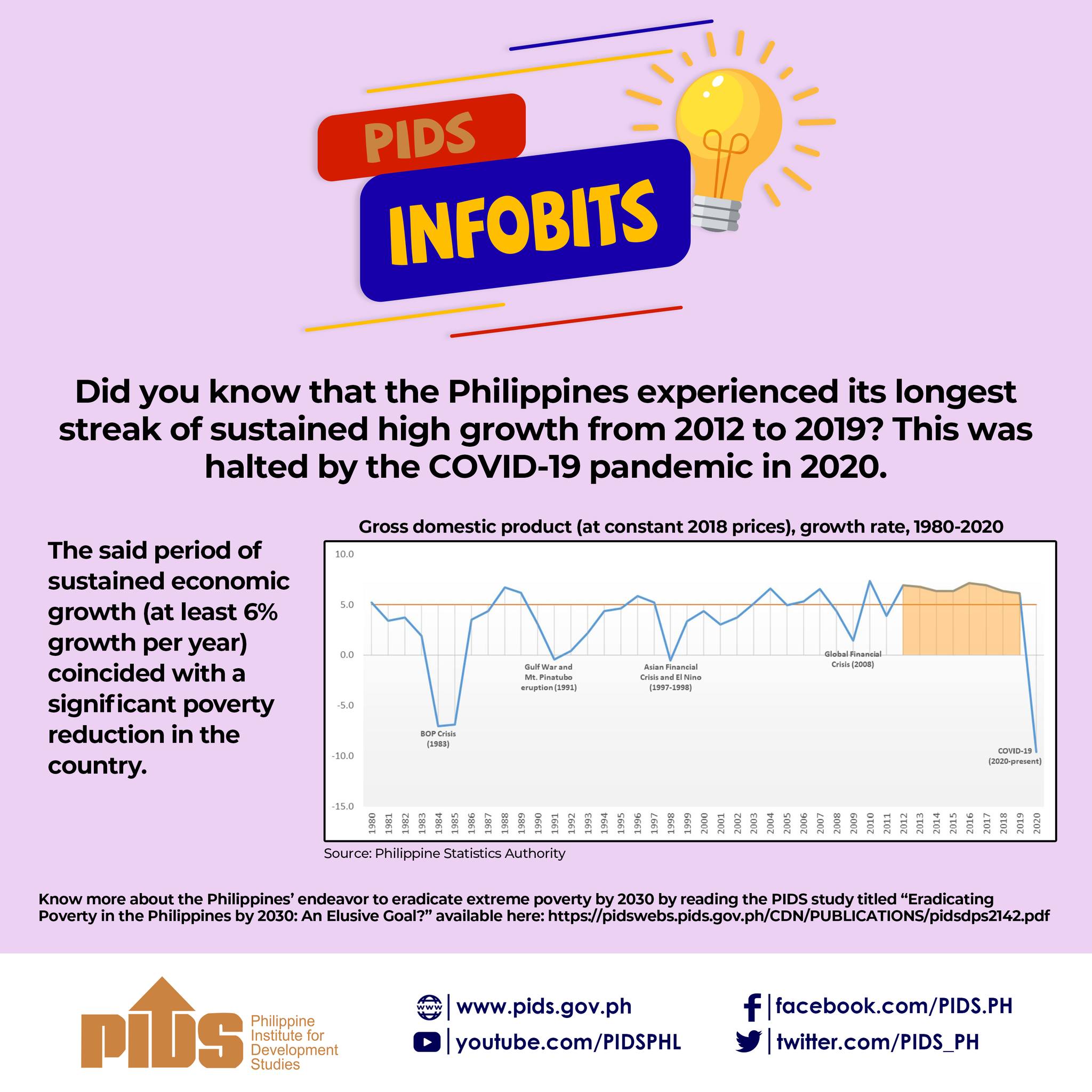Philippine farm output could grow at a slower pace in the second half of the year following the discovery of the avian influenza (AI), or bird flu, outbreak in Pampanga, according to economists.
Economists told the BusinessMirror that the government should “act swiftly” to contain the bird-flu outbreak in San Luis, Pampanga, to prevent the “drastic decline” in demand for chicken.
“If the outbreak is contained, then it would have minimal impact. But consumer panic could affect chicken demand and drive down prices and profits,” Dr. Rolando T. Dy, executive director of the University of Asia and the Pacific’s Center for Food and Agri Business, told the BusinessMirror.
“If unfounded panic continues, then pork and fish prices would go up,” Dy added.
conomist Pablito M. Villegas, vice president of the Confederation of Filipino Consulting Organizations, said the performance of the poultry sector during the July-to-December period would depend on the government’s action.
“It depends on the speed of containment versus its spread effect, including the extent of consumer scare, which will affect both supply and demand decisions,” Villegas told the BusinessMirror.
“Surely, the bird-flu outbreak will have an impact on the poultry sector in the third and fourth quarters. [Production] could really go down,” he added.
Philippine Institute for Development Studies senior research fellow Roehlano M. Briones said the 90-day ban on the shipment of poultry products from Luzon to other parts of the country would hurt the poultry sector.
“That’s a really big thing. That’s potentially serious, given that the concentration of poultry production is in Luzon,” Briones told the BusinessMirror.
“The chicken-meat consumption pattern across Luzon, the Visayas and Mindanao remains the same. Definitely, this might cause shortages in the Visayas and Mindanao,” he added.
&Poultry growers belonging to the United Broiler Raisers Association (Ubra) said the 90-day ban on Luzon poultry products would adversely affect the poultry sector’s performance in the remaining months of the year.
“If the harvest slows down, the volume of sales decline by 40 percent to 50 percent, then there will be delays in raising new flocks,” Ubra President Elias Jose Inciong told the BusinessMirror.
Inciong urged the Department of Agriculture (DA) to immediately lift the ban on Luzon poultry products.
“The government is saying that the outbreak is contained and that all products outside the 7-kilometer radius control area are safe. Why then can we not ship our products to other regions?” he said.
In a news briefing on August 14, Agricultural Sector Alliance of the Philippines (Agap) Secretary-General Rufina S. Salas said egg producers could lose as much as P963 million due to the ban.
“We are shipping 18 millions eggs a week. So that is 214 million eggs in 90 days. That’s a lot of eggs,” Salas told Agriculture Secretary Emmanuel F. Piñol during the briefing.
However, Piñol said he could not lift the 90-day ban as this will ensure that bird flu will not spread elsewhere.
Piñol added he would await the recommendation of the team handling the AI case in San Luis, Pampanga, before he decides on lifting the ban on Luzon poultry products.
The DA chief acknowledged that the bird-flu outbreak could affect the poultry sector’s performance in the third and fourth quarters—when demand for chicken goes up due to the holidays.
Q2 farm output
Data released by the Philippine Statistics Authority (PSA) on Tuesday showed that agricultural output in the second quarter recovered and grew by 6.18 percent year-on-year.
The PSA said the crops subsector remained as the main driver of farm growth in the April-to-June period.
The poultry subsector, which accounted for 16 percent of farm production, expanded by 8.36 percent.
“The crops subsector registered an 11.72-percent increase in output. It shared 50.75 percent of the total agricultural production,” the PSA said in its report, titled “Performance of Philippine Agriculture”.
Palay production in the second quarter rose by 11.72 percent to 4.15 million metric tons (MMT), from 3.71 MMT a year ago. The PSA attributed this to the expansion in areas planted with rice and the availability of irrigation water.
>Favorable planting conditions also encouraged more farmers to plant corn. Output rose by nearly 46 percent to 1.3 MMT, from 911,000 MMT recorded in the same time period in 2016.
>In the first half of the year, PSA data showed that farm-production growth averaged 5.71 percent.
“The recovery will continue in the second half of the year, but not probably as high during the first half because you have already posted a high growth rate in the first two quarters,” Briones said.
Data provided to the BusinessMirror by the PSA showed the second-quarter growth was the highest since 2011, when the agriculture sector expanded by 6.68 percent.
Data also showed that between 1999 and 2017, the most dismal performance of the farm sector was recorded in 2010—an election year—when output contracted by 2.79 percent.
In the second quarter of 2016, which was also an election year, farm output declined by 2.21 percent.
In terms of first-semester growth, farm output this year was the highest since 1999, when it expanded by 9.82 percent. Between 1999 and 2017, agriculture production was the lowest last year, when it contracted by 3.39 percent.<
he PSA said the agriculture sector’s contribution to the country’s GDP has been declining since 2006. Sans agriculture services and forestry, the sector’s output contributed only 8.2 percent to GDP in the past 10 years.
Economists told the BusinessMirror that the government should “act swiftly” to contain the bird-flu outbreak in San Luis, Pampanga, to prevent the “drastic decline” in demand for chicken.
“If the outbreak is contained, then it would have minimal impact. But consumer panic could affect chicken demand and drive down prices and profits,” Dr. Rolando T. Dy, executive director of the University of Asia and the Pacific’s Center for Food and Agri Business, told the BusinessMirror.
“If unfounded panic continues, then pork and fish prices would go up,” Dy added.
conomist Pablito M. Villegas, vice president of the Confederation of Filipino Consulting Organizations, said the performance of the poultry sector during the July-to-December period would depend on the government’s action.
“It depends on the speed of containment versus its spread effect, including the extent of consumer scare, which will affect both supply and demand decisions,” Villegas told the BusinessMirror.
“Surely, the bird-flu outbreak will have an impact on the poultry sector in the third and fourth quarters. [Production] could really go down,” he added.
Philippine Institute for Development Studies senior research fellow Roehlano M. Briones said the 90-day ban on the shipment of poultry products from Luzon to other parts of the country would hurt the poultry sector.
“That’s a really big thing. That’s potentially serious, given that the concentration of poultry production is in Luzon,” Briones told the BusinessMirror.
“The chicken-meat consumption pattern across Luzon, the Visayas and Mindanao remains the same. Definitely, this might cause shortages in the Visayas and Mindanao,” he added.
&Poultry growers belonging to the United Broiler Raisers Association (Ubra) said the 90-day ban on Luzon poultry products would adversely affect the poultry sector’s performance in the remaining months of the year.
“If the harvest slows down, the volume of sales decline by 40 percent to 50 percent, then there will be delays in raising new flocks,” Ubra President Elias Jose Inciong told the BusinessMirror.
Inciong urged the Department of Agriculture (DA) to immediately lift the ban on Luzon poultry products.
“The government is saying that the outbreak is contained and that all products outside the 7-kilometer radius control area are safe. Why then can we not ship our products to other regions?” he said.
In a news briefing on August 14, Agricultural Sector Alliance of the Philippines (Agap) Secretary-General Rufina S. Salas said egg producers could lose as much as P963 million due to the ban.
“We are shipping 18 millions eggs a week. So that is 214 million eggs in 90 days. That’s a lot of eggs,” Salas told Agriculture Secretary Emmanuel F. Piñol during the briefing.
However, Piñol said he could not lift the 90-day ban as this will ensure that bird flu will not spread elsewhere.
Piñol added he would await the recommendation of the team handling the AI case in San Luis, Pampanga, before he decides on lifting the ban on Luzon poultry products.
The DA chief acknowledged that the bird-flu outbreak could affect the poultry sector’s performance in the third and fourth quarters—when demand for chicken goes up due to the holidays.
Q2 farm output
Data released by the Philippine Statistics Authority (PSA) on Tuesday showed that agricultural output in the second quarter recovered and grew by 6.18 percent year-on-year.
The PSA said the crops subsector remained as the main driver of farm growth in the April-to-June period.
The poultry subsector, which accounted for 16 percent of farm production, expanded by 8.36 percent.
“The crops subsector registered an 11.72-percent increase in output. It shared 50.75 percent of the total agricultural production,” the PSA said in its report, titled “Performance of Philippine Agriculture”.
Palay production in the second quarter rose by 11.72 percent to 4.15 million metric tons (MMT), from 3.71 MMT a year ago. The PSA attributed this to the expansion in areas planted with rice and the availability of irrigation water.
>Favorable planting conditions also encouraged more farmers to plant corn. Output rose by nearly 46 percent to 1.3 MMT, from 911,000 MMT recorded in the same time period in 2016.
>In the first half of the year, PSA data showed that farm-production growth averaged 5.71 percent.
“The recovery will continue in the second half of the year, but not probably as high during the first half because you have already posted a high growth rate in the first two quarters,” Briones said.
Data provided to the BusinessMirror by the PSA showed the second-quarter growth was the highest since 2011, when the agriculture sector expanded by 6.68 percent.
Data also showed that between 1999 and 2017, the most dismal performance of the farm sector was recorded in 2010—an election year—when output contracted by 2.79 percent.
In the second quarter of 2016, which was also an election year, farm output declined by 2.21 percent.
In terms of first-semester growth, farm output this year was the highest since 1999, when it expanded by 9.82 percent. Between 1999 and 2017, agriculture production was the lowest last year, when it contracted by 3.39 percent.<
he PSA said the agriculture sector’s contribution to the country’s GDP has been declining since 2006. Sans agriculture services and forestry, the sector’s output contributed only 8.2 percent to GDP in the past 10 years.












